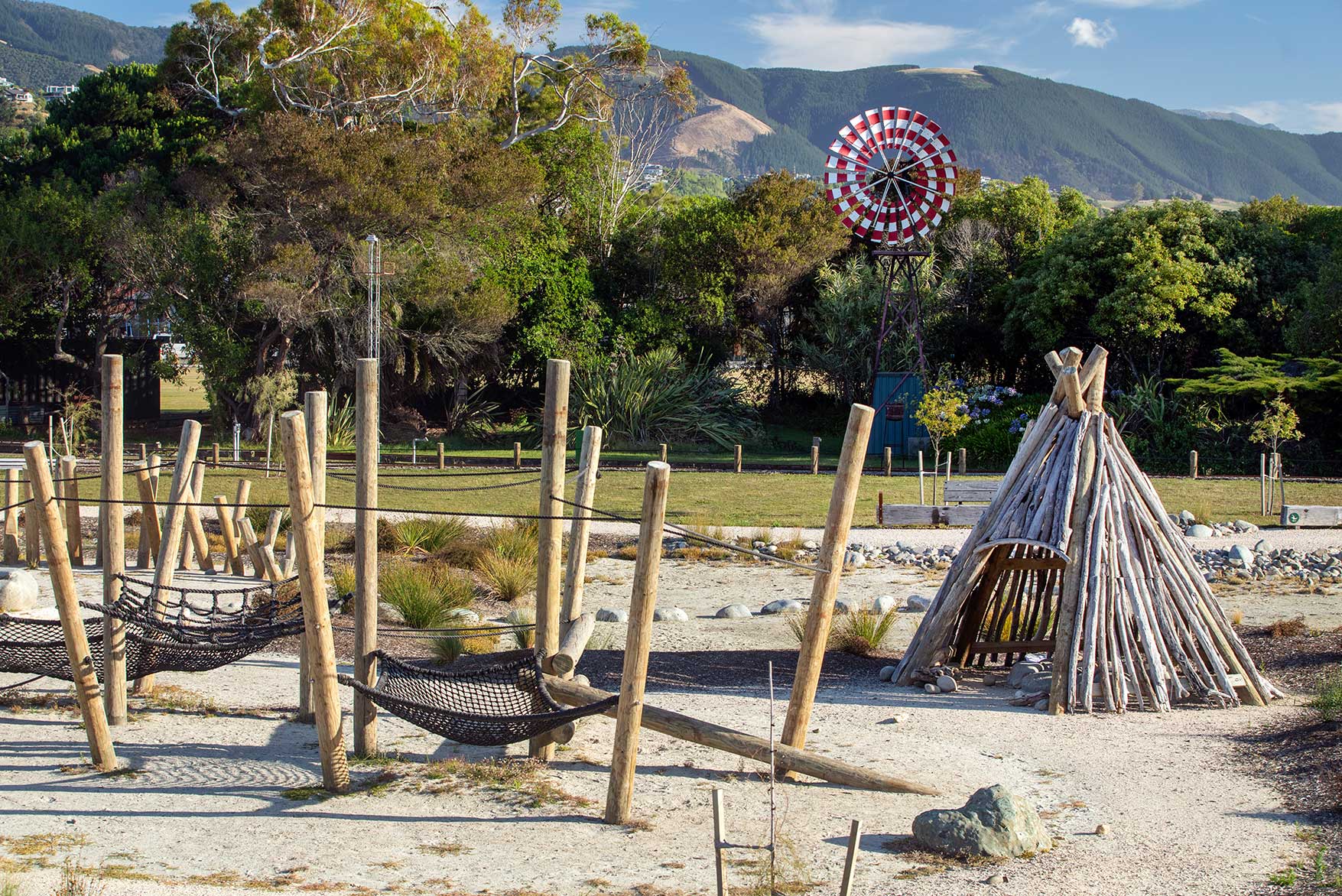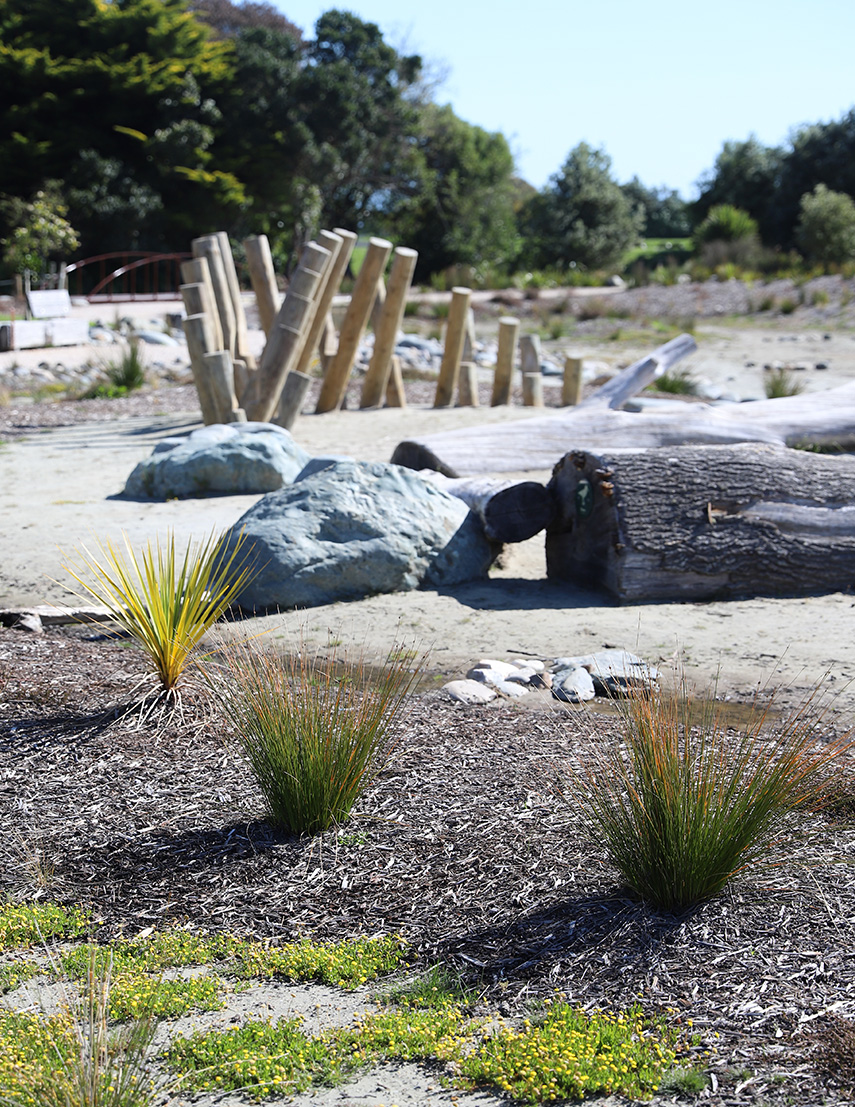The new design focused on removing the pond from the site and integrating both the coastal location and the stormwater discharge into the design. One of the main challenges and opportunities was allowing for tidal inundation and incorporating practical design solutions to allow this to happen.
The updated playground design integrates the coastal location with a restored estuarine habitat and the need for stormwater discharge, with a key focus on managed retreat from sea level rise. The tide now sweeps into the site as a natural play feature within the playground for children to explore and learn about natural patterns and processes.
Tide charts over a 30-year timeframe were considered to map how far the estuarine environment would extend into the park, incorporating sea level rise into the park. The landform was enhanced with play areas connected through a network of raised pathways and boardwalks with wood and stone making for an interactive nature-based play space. The design incorporated a spiral discharge path that slowed the stormwater at the discharge point into the estuary, to prevent erosion.
Bio-retention was used throughout the site with a focus on permeable, natural materials and the establishment of constructed wetlands. Dunal landforms were used to protect existing infrastructure from inundation and control stormwater flows through the storage and release of water.
A challenging part of the project was creating a successful wetland environment; careful consideration was required for the selection of plant species chosen and how they relate to varying tidal inundation levels throughout the year.





